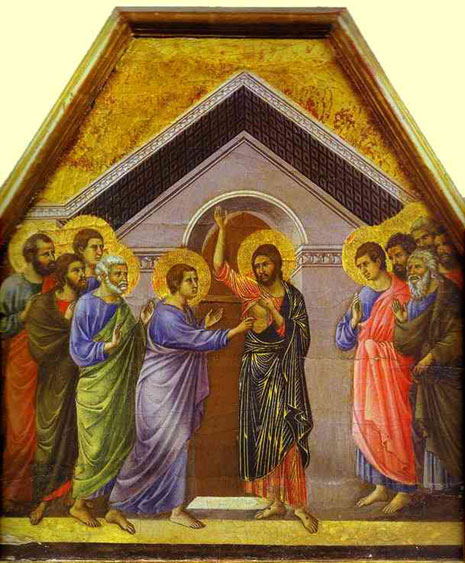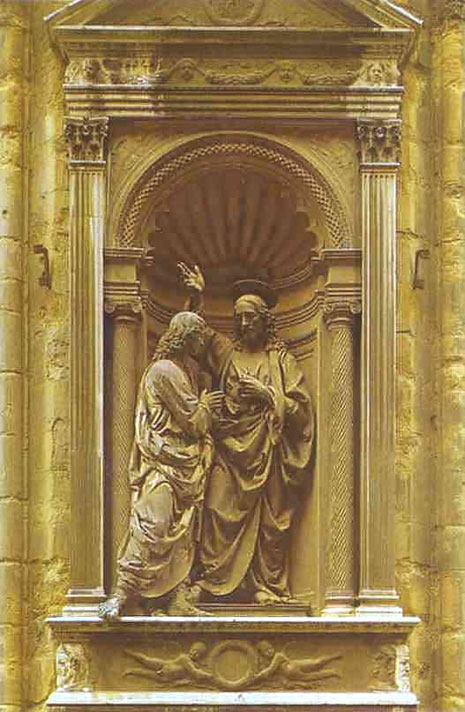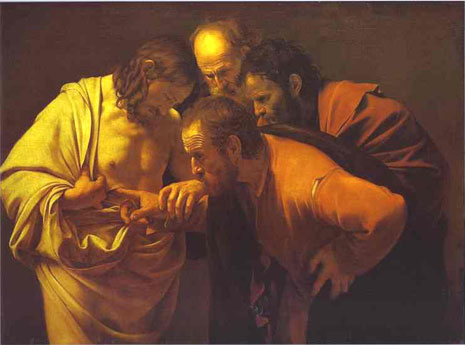St. Thomas the Saint
The Importance of St. Thomas
Of all the saints, Thomas, or Didymus (both meaning "twin") is the one most closely associated with faith. After the Resurrection, Thomas alone required physical proof of Christ's wounds. The Lord offered his side for the disbelieving disciple to touch, and he held out his hands, showing the scars of his wounds.
God's mercy arranged that, in touching the wounds of his Lord, Thomas's ~ and our ~ wounds of disbelief were healed.
In a paradox of joy and deliverance, the disbelief of Thomas has done more for our faith than the unshaken belief of the other disciples. Through him, doubt is cast aside and our faith is strengthened.

Duccio di Buoninsegna. Maestà (back, crowning panel): Doubting St. Thomas. 1308-11.
Tempera on wood panel. In the collection of Museo dell'Opera del Duomo, Siena, Italy.
According to the Apocryphal Acts of Thomas, he journeyed to India to preach, his destination having been decided by the casting of lots among the Apostles.
Once there, King Gundafor ordered Thomas to build him a palace while he was away on an extended journey. Upon his return, the King asked to see the palace.
It did not exist, for Thomas had given the building money to the poor and had spent his time preaching the word of the Lord.
Thomas told the King he could see his palace after his death, and the King sent Thomas to prison, instructing that he by flayed alive.
But at that time the King's brother died and saw in heaven the palace that Thomas had built for Gundafor. The King's brother was allowed to return to the earth and buy it for himself. However, a chastened Gundafor refused to sell it. Instead, he set Thomas free and was baptized by him, along with his brother and many of his people.

Christ and Doubting Thomas, Verrecchio, 1476-83. Orsanmichele, Florence.
"Blessed are those who have not seen
and have believed."

Doubting Thomas by Caravaggio; 1602-03. Oil on canvas. In the collection of Sanssouci, Potsdam, Germany.
[Portions of the text drawn from Every Man's Book of Saints, London:
A.R. Mowbray & Co. Ltd., 1981]


